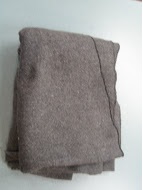
There are many techniques that trainees learn during first aid training, and one of those that must not be missed is the use of temperature control when administering first aid during emergencies. Why the control of temperature is important as far as first aid is concerned? The reason for this is that in traumatic conditions, this could be the turning point for a victim, yet it is a wonder this still remains largely ignored in many circles. To put this in perspective, what is the first thing that comes to mind when addressing a victim of an accident and who is lying on the ground at night? For many individuals, treating the injuries plays a critical role, but does anyone stop to think about the repercussions of plummeting temperatures?
[youtube url=”https://www.youtube.com/watch?v=-cjcXelBt00″ width=”200″ height=”200″]The importance of temperature control during first aid
The first and most fundamental knowledge in light of temperature ranges is that there are a number of diseases and disorders that progress significantly when temperature is out of control. As is the case with many functional parts of the human body, the range for a homeostatic environment is pretty narrow. When temperatures are too high, the condition is referred to as hyperthermia while extremely low temperatures lead to hypothermia. Both conditions are dangerous, so it is important that first aid is administered as a matter of urgency.
To make this easy to understand, one should think of it this way: each cell in the body comprises chemical compounds that are integral to the proper functioning of the body. These chemical compounds are protein in nature, and what this means is that they are prone to damage if temperature control is not maintained. For this sole reason, it is extremely vital that a temperature range of between 32 and 35 degrees is maintained. In many cases where first aid is provided, the victim is prone to hypothermia. How is this made possible? This occurs due to the frequency of the following actions: placing the victim on a backboard to prevent damage to the head and/or spine following a traumatic incident, ripping clothes off to take care of injuries underneath as well as using infusions to increase blood volume.
The fact that many injuries will have the victim lying on the ground, it becomes extremely critical to ensure that temperature control is maintained within a perfect range. When giving first aid, the first aider must take time to understand what exactly causes the decrease in temperature. Is it the cold environment or the wet clothing as is the case in drowning or perhaps hypothermia resulting from staying in ice too long? Whichever the case, it becomes important to make sure that the victim is warm enough. On the far end of the temperature scale is hyperthermia, a rare but serious disorder that arises from extremely high temperatures.
Hyperthermia as the condition is referred to, could result from heat strokes, heat exhaustion following such injuries as well as select medications that a patient could be taking. The ideal form of temperature control in this case involves removing the victim from their immediate environment to promote cooling. The fact that temperatures may not come to mind when giving first aid does not mean that this does not play a critical role.